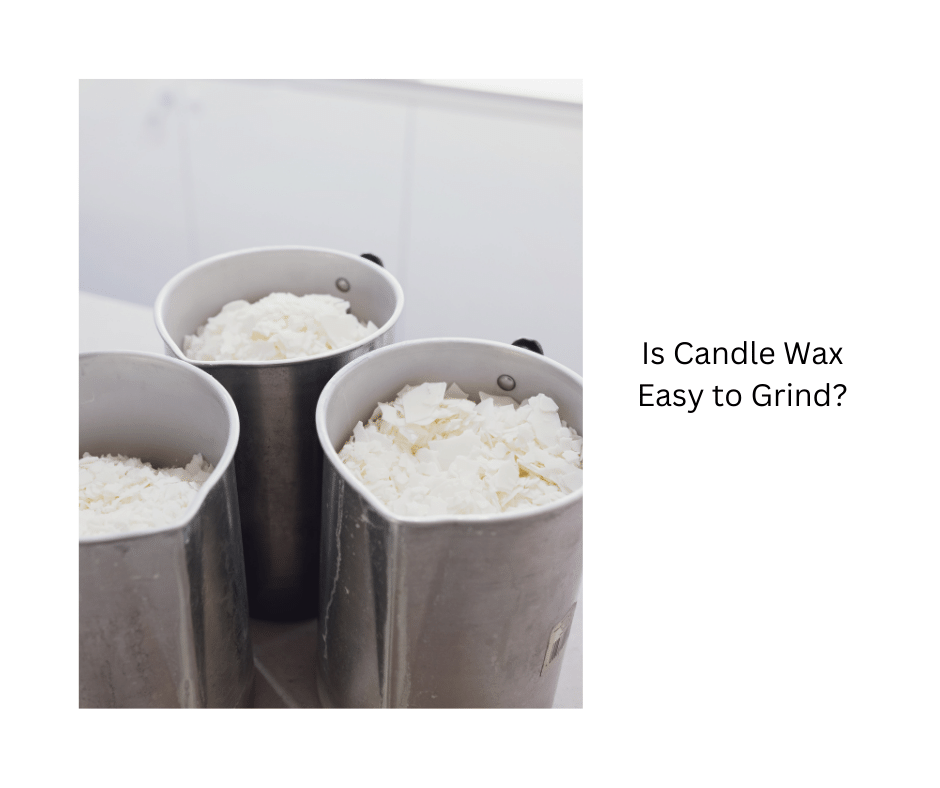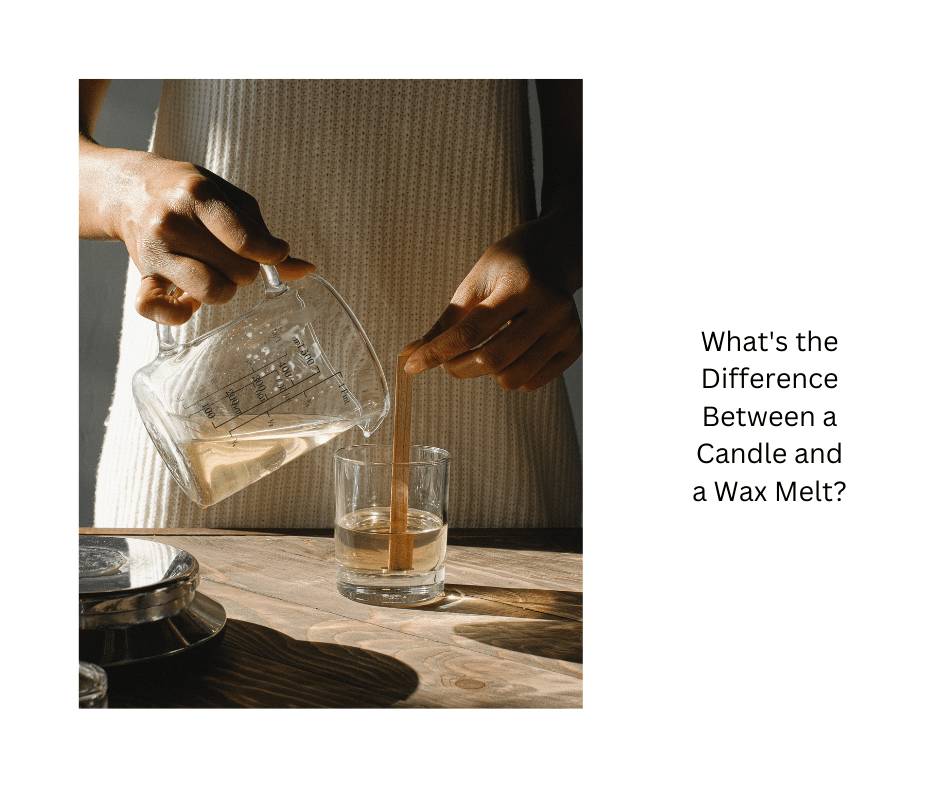Have you ever been mesmerized by the gentle flicker of a candle flame, only to be further captivated when you see the candle change colors right in front of you?
Imagine lighting a candle and watching as its vibrant hues shift and transform, creating an enchanting display of colors. This phenomenon is not just a figment of your imagination; it is the result of the fascinating chemistry behind color-changing candles.
Take, for instance, the case of the heat-activated color-changing candle. As the flame dances and warms the surrounding wax, a remarkable transformation occurs. The pigments embedded within the wax react to the heat, causing the candle to shift from one color to another. It is a captivating sight that showcases the intricate relationship between light, heat, and color.
In this article, we will delve into the science behind color-changing candles, exploring the various techniques and effects used to create these captivating displays. We will also compare the use of natural versus synthetic colorants, and even provide some DIY projects for those inspired to try their hand at creating their own color-changing candles.
So, prepare to be amazed as we unravel the secrets behind candles that change color when lit.
Key Takeaways
- Color-changing candles are created using heat-activated dyes or pigments.
- The heat from the flame melts the wax and causes the dye molecules to become mobile, leading to a shift in color.
- Different temperatures affect the color transformation, and the wax melting point varies depending on the type of wax used.
- Safety precautions should be taken when using colorants in candles, with natural colorants generally being considered safer.
The Chemistry of Color-Changing Candles
Discover the fascinating chemistry behind how your candle changes color when you light it. The secret lies in the use of heat-activated dyes and the occurrence of chemical reactions.
Heat-activated dyes are specifically designed to change color when exposed to heat, and they’re often used in various applications such as textiles and thermometers. In the case of color-changing candles, these dyes are added to the wax mixture during the manufacturing process.
When you light the candle, the heat from the flame begins to melt the wax, causing the dye molecules to become mobile. As the dye molecules move, they come into contact with oxygen in the air, which triggers a chemical reaction known as oxidation. This reaction leads to a change in the arrangement of the atoms within the dye molecules, resulting in a shift in color.
The specific color change depends on the type of dye used in the candle. Some dyes may change from one color to another, while others may shift along a spectrum of colors. This variation in color change adds to the enchanting effect of the candle.
As the heat-activated color changes occur, the candle creates a mesmerizing display of shifting hues. This captivating transformation adds an element of intrigue and ambiance to any space where the candle is lit.
Heat-Activated Color Changes
When studying heat-activated color changes in candles, it’s important to understand how temperature affects candle color. Additionally, it’s crucial to understand the role of melting wax and the use of thermal dyes and pigments.
Temperature plays a crucial role in the color transformation of candles. Different temperatures can cause the wax to melt and change its physical state. The melting wax not only provides a medium for the dyes and pigments to dissolve but also allows them to disperse throughout the candle. This dispersion results in the desired color change when heated.
How Temperature Affects Candle Color
Imagine being able to witness the captivating transformation of a candle’s color as it’s exposed to different temperatures. The effects of heat on a candle can lead to intriguing chemical reactions that result in changes in color.
When a candle is heated, the wax begins to melt, causing the molecules within the wax to move more rapidly. As the temperature increases, the energy from the heat causes the chemical bonds in the wax to break, resulting in the release of different compounds. These compounds, when exposed to the flame, undergo further chemical reactions that produce colorful emissions.
At higher temperatures, the candle’s color may become more vibrant and intense, while at lower temperatures, it may appear duller or even change to a different hue. Understanding how temperature affects candle color provides valuable insights into the fascinating world of heat-activated color changes.
The Role of Melting Wax
As the wax melts, it undergoes a mesmerizing transformation that adds a touch of magic to the dancing flame. This transformation is due to the chemistry and properties of the wax itself.
Different types of wax have different melting points, which can vary depending on the ingredients used in their composition. For example, paraffin wax has a relatively low melting point, while beeswax has a higher melting point. These melting point variations play a crucial role in the color changes observed in a lit candle.
As the wax melts and is drawn up the wick, it interacts with thermal dyes and pigments that have been added to the wax. These dyes and pigments are designed to change color at specific temperatures, creating the vibrant hues and mesmerizing color changes that we associate with a burning candle.
Thermal Dyes and Pigments
Thermal dyes and pigments in the melting wax create a captivating display of vibrant hues and mesmerizing transformations. Thermal dyes are organic compounds that change color with temperature variations. They are highly sensitive to heat and undergo a reversible chemical reaction, resulting in a change of color.
On the other hand, pigments are insoluble compounds that retain their color even when heated. The application of thermal dyes in candles allows for the creation of visually stunning effects as the heat from the flame causes the dyes to shift and blend, producing a kaleidoscope of colors. These dyes are carefully selected to ensure compatibility with the wax and to achieve desired color variations.
The use of thermal pigments, although less common, provides a more stable color change that is not influenced by temperature. This transition in color from the melting process sets the stage for a discussion on how light and color further enhance the enchanting display of a lit candle.
Light and Color
When you light a candle, its color magically transforms. This phenomenon can be explained by the interaction between light and color. Light perception and color theory play a crucial role in understanding this process.
Light is composed of different wavelengths, and when it interacts with an object, certain wavelengths are absorbed while others are reflected. The color we perceive is determined by the wavelengths that are reflected back to our eyes.
In the case of a candle, the color change occurs due to the presence of thermal dyes or pigments in the wax. These substances are designed to change color when exposed to heat. When the flame ignites the wick, it generates heat that is transferred to the surrounding wax. As the temperature rises, the thermal dyes or pigments in the wax undergo a chemical reaction, causing them to change color. This change can be subtle or dramatic, depending on the specific dye or pigment used.
Understanding the interaction between light and color is essential for creating special effects and techniques with candles. By manipulating the composition of the wax or incorporating different dyes or pigments, it’s possible to achieve a wide range of color transformations. These techniques can be used to create stunning visual effects and enhance the ambiance of any setting.
Special Effects and Techniques
By harnessing the power of artistic techniques, candles can create a mesmerizing dance of vibrant hues, captivating our senses and transforming any space into a realm of enchantment.
To achieve these stunning color transformations, heat-activated dyes are often used. These dyes are specially formulated to change color when exposed to heat, making them perfect for creating the captivating effects seen in color-changing candles.
Creating DIY color-changing candles can be a fun and rewarding project. There are several techniques that can be used to achieve this effect. Here are three methods to get you started:
-
Crayon Shavings: Melt crayons of different colors and mix the shavings into the melted wax. As the candle burns, the heat activates the dyes in the crayon shavings, resulting in a beautiful color display.
-
Wax Dye Chips: Add heat-activated dye chips to the melted wax. These chips dissolve and mix with the wax, creating a vibrant color that changes as the candle burns.
-
Layering Technique: Pour different colored layers of wax into the candle mold. As each layer burns, the heat activates the dyes, creating a stunning color transition.
These DIY techniques allow you to experiment and create unique color-changing candles that will mesmerize and delight. However, if you prefer a more natural approach, you can explore the use of natural vs. synthetic colorants in candle making.
Transitioning into the next section, we will explore the advantages and disadvantages of each option.
Natural vs. Synthetic Colorants
If you’re looking to add a touch of nature to your DIY candle creations, you may be wondering whether to use natural or synthetic colorants. Natural colorant sources, such as plant extracts, minerals, and clays, can provide a variety of vibrant and earthy hues.
Plant extracts, such as beetroot powder or turmeric, can create beautiful reds, yellows, and oranges. Minerals like iron oxide can produce rich browns and blacks, while clays like French green clay can give a natural green tint.
On the other hand, synthetic colorant manufacturing involves the creation of dyes and pigments through chemical processes. These synthetic colorants offer a wide range of colors that may not be found in nature, allowing for more creative options. However, it’s important to consider safety considerations when using colorants in candles, as certain dyes and pigments may release toxic fumes when burned. Therefore, it’s crucial to choose colorants that are specifically designed for candle making and have been tested for safety.
Moving into the next section about safety considerations, it’s essential to understand the potential risks associated with using colorants in candles.
Safety Considerations
When considering the safety of color-changing candles, it’s crucial to take into account the potential hazards associated with the use of different colorants. The safety of these candles is of utmost importance, as they’re often used in homes and other enclosed spaces.
There are several safety considerations to keep in mind when using color-changing candles. First and foremost, it’s essential to ensure that the colorants used in the candles are non-toxic and safe for combustion. Certain synthetic colorants may release harmful fumes when burned, posing a risk to the health and well-being of individuals in the vicinity. Natural colorants, on the other hand, are generally considered safer as they’re derived from plant-based sources.
Additionally, it’s crucial to practice fire prevention measures when using color-changing candles. This includes placing candles in stable holders, away from flammable materials, and ensuring that they’re not left unattended. It’s also important to keep candles out of the reach of children and pets to prevent accidents.
The safety of color-changing candles should be a primary concern. By using non-toxic colorants and practicing fire prevention measures, the risk of accidents and harm can be significantly reduced. Transitioning into the subsequent section about DIY color-changing candle projects, it’s important to explore creative ways to incorporate safe and visually appealing colorants into candle-making projects.
DIY Color-Changing Candle Projects
To create a DIY color-changing candle, you’ll need to follow step-by-step instructions. Gather the necessary materials and tools, such as a plain white candle, heat-resistant dye, a heat source, and a heat-resistant container.
Once you have the basic technique down, you can explore creative ideas for customization, such as using multiple colors or experimenting with different patterns and designs.
Step-by-Step Instructions
First, you’ll need to gather all the necessary materials for these step-by-step instructions on how to observe a candle changing color when it’s lit. Understanding the chemistry behind color changes is important, so make sure to choose the right materials.
You will need:
- A white candle
- A heat-resistant container
- Candle dye
- A thermometer
- A heat source like a lighter or matches
Safety precautions are crucial, so remember to:
- Work in a well-ventilated area
- Wear protective gloves
- Keep a fire extinguisher nearby
Now, let’s move on to the next section where I will discuss the specific materials and tools needed for this project.
Materials and Tools Needed
To embark on this colorful journey, gather the essential ingredients that’ll bring your imagination to life. Here are the materials and tools needed for your color-changing candle experiment:
-
Thermal colorants: These special pigments are designed to change color when exposed to heat. Choose a variety of colors to create a vibrant display.
-
Wax: Opt for a high-quality candle wax that’s suitable for melting and molding. Be sure to consider the amount needed based on the size of your candle.
-
Candle-making tools: Prepare a double boiler or a heat-resistant container to melt the wax. You’ll also need a stirring utensil, a thermometer to monitor the wax temperature, and candle molds or containers to shape your candles.
With these materials in hand, you’re ready to explore the fascinating world of color-changing experiments. Get ready to unleash your creativity and discover unique ways to customize your candles in the next section.
Creative Ideas for Customization
Let your imagination run wild and get ready to transform your candles into personalized works of art with these creative customization ideas. With customizable designs, you can create candles that reflect your personal style and make perfect personalized gifts for loved ones. To help inspire your creativity, here are some ideas:
| Column 1 | Column 2 |
|---|---|
| Monogram candle | Photo transfer candle |
| Hand-painted design | Decoupage candle |
| Embossed patterns | Glitter embellishments |
| Wax seal impressions | Stenciled motifs |
For a monogram candle, use alphabet stencils to paint your initials on the candle surface. Another option is to transfer a cherished photo onto the candle using wax paper and a heat source. Hand-painted designs allow for intricate and unique artwork, while decoupage allows you to adhere decorative paper or fabric onto the candle. Embossing creates raised patterns, and glitter adds sparkle and texture. Wax seal impressions give a vintage touch, and stencils can be used for precise and repeatable motifs. These customization ideas offer endless possibilities for creating personalized candles that are both beautiful and meaningful. Now, let’s explore the historical and cultural significance of candles.
Historical and Cultural Significance
The flickering flame of a candle, like a fleeting memory, has woven its way through centuries of history and culture, leaving behind a trail of mesmerizing colors. Candlelight has always held a deep cultural symbolism, representing purity, enlightenment, and spirituality.
Throughout the ages, candles have evolved in their form and function, reflecting the changing needs and beliefs of different civilizations. From the ancient Egyptians who used candles in religious ceremonies and rituals, to the Romans who utilized them for both practical and decorative purposes, candles have been an integral part of human history. Over time, advancements in technology and materials have allowed for the creation of candles in various shapes, sizes, and colors, each with its own unique significance.
The colors of candles have held great importance in different cultures. In Christianity, for example, white candles symbolize purity and hope, while red candles represent love and sacrifice. In Hinduism, the color yellow is associated with knowledge and learning, and green signifies fertility and prosperity. These cultural associations add depth and meaning to the act of lighting a candle.
In recent years, commercial color-changing candles have become popular. These candles use advanced technology to change colors as they burn, creating a mesmerizing visual experience. The transition from one color to another can represent different moods or emotions, providing a unique sensory experience for the user.
As we explore the fascinating historical and cultural significance of candles, it’s important to also acknowledge the modern innovations that have brought us to the era of commercial color-changing candles.
Commercial Color-Changing Candles
Historically and culturally, candles have held great significance, symbolizing hope, celebration, and spirituality. However, in today’s world, candles have evolved beyond their traditional uses. Commercial color-changing candles are a prime example of this transformation.
These innovative candles are designed to change color when lit, creating a mesmerizing visual experience. Commercial color-changing candles are made using advanced technology and specialized materials. They often incorporate heat-responsive dyes and pigments that react to the heat generated by the flame. When the candle is lit, the heat causes the color to change gradually or in distinct patterns, captivating the beholder’s attention.
These candles have found various applications in the commercial sector. They are commonly used in decorative displays, creating an enchanting ambiance in restaurants, hotels, and event venues. Additionally, they have become popular in the spa and wellness industry, enhancing relaxation experiences. The dynamic color changes add an element of surprise and delight to these settings, leaving a lasting impression on customers.
However, it’s important to note that safety precautions must be taken when using these candles. They should be placed on heat-resistant surfaces and kept away from flammable materials. Additionally, it’s crucial to follow the manufacturer’s instructions regarding burn time and extinguishing methods.
As we explore beyond candles, we’ll discover even more fascinating advancements in the realm of lighting and ambiance creation.
Exploring Beyond Candles
Color-changing LED lights are a popular alternative to color-changing candles. These lights use advanced technology to produce a wide range of colors and effects, and they can be easily controlled and programmed.
In addition to LED lights, there are also other objects that can change colors, such as clothing, furniture, and even building facades. These color-changing objects offer exciting opportunities for creative applications and innovations, allowing for the creation of immersive environments and interactive experiences.
Color-Changing LED Lights
Imagine walking into a room and being instantly captivated by the mesmerizing glow of LED lights that change colors. LED lights, also known as Light Emitting Diodes, have revolutionized the lighting industry with their energy efficiency and versatility.
The color-changing technology used in these LED lights allows them to emit a wide spectrum of colors, creating a stunning visual experience. These lights utilize a combination of red, green, and blue diodes that can be controlled individually or in combination to produce an array of colors.
With the help of advanced electronics and programming, the color-changing effects can be customized and synchronized to create dynamic lighting displays. Other color-changing objects, such as lamps and furniture, also employ similar technology to provide a vibrant and immersive environment.
Other Color-Changing Objects
As you step into the room, your eyes are immediately drawn to the captivating allure of everyday objects that transform into a kaleidoscope of vibrant hues, creating an immersive and enchanting atmosphere.
These color-changing objects utilize heat-sensitive materials and temperature-responsive coatings to create their mesmerizing effect. Here are five examples of such objects:
-
Color-changing mugs: These mugs feature a special coating that reacts to heat, causing the design or color to change when hot liquid is poured into them.
-
Color-changing spoons: These spoons are made from a heat-sensitive material that changes color when it comes into contact with hot food or liquid.
-
Color-changing nail polish: This innovative nail polish changes color based on temperature, creating a unique and dynamic look.
-
Color-changing clothing: Certain fabrics are embedded with temperature-responsive coatings, allowing them to change color when exposed to different temperatures.
-
Color-changing phone cases: These cases feature a thermochromic coating that changes color when exposed to heat from your hand or the environment.
These objects showcase the exciting possibilities of heat-sensitive materials and temperature-responsive coatings in creating interactive and visually stunning experiences.
Moving on to the next section, let’s explore the creative applications and innovations in this field.
Creative Applications and Innovations
Get ready to be amazed by the innovative ways heat-sensitive materials and temperature-responsive coatings are being used to create captivating and interactive experiences.
Heat activated art is a growing trend, where artists are using thermochromic pigments that change color when exposed to heat. These pigments can be incorporated into paintings, sculptures, and installations, allowing viewers to witness a transformation as the artwork responds to their body heat or the surrounding environment. It adds an element of surprise and interactivity to the traditional art experience.
Another exciting application is temperature responsive fashion. Designers are incorporating thermochromic materials into clothing and accessories, allowing them to change color with body heat or external temperatures. This creates a dynamic and visually striking effect, turning clothing into a form of self-expression that adapts to the wearer’s environment.
The possibilities for creative applications and innovations with heat-sensitive materials are endless, and we can expect to see even more astonishing creations in the future.
Frequently Asked Questions
How long does it take for a color-changing candle to change its color when lit?
The color-changing process of a candle is influenced by various factors, including the type of wax used and the additives present in it. When the candle is lit, the heat causes the wax to melt and release the additives, which then interact with the flame and produce different colors.
For example, a candle with red wax may transform into shades of orange or pink when lit. These color variations provide a visually appealing experience for the viewers.
Can I use a regular candle to achieve the same color-changing effect?
To achieve the same color-changing effect as a candle that changes color when lit, one can use a regular candle by using special wicks and experimenting with different candle sizes. By incorporating special wicks, the candle’s flame will produce different colors as it burns.
Additionally, different candle sizes can affect the intensity and duration of the color-changing effect. Through careful experimentation, one can create a captivating display of color using a regular candle.
Are color-changing candles safe for children to use?
Color-changing candles can be safe for children to use, as long as proper safety precautions are followed. It is important to supervise children when they’re using these candles and keep them away from flammable materials.
Additionally, it’s recommended to use color-changing LED candles instead, which provide a similar effect without the risk of fire or burns. These LED candles are battery-operated and don’t produce heat, making them a safer alternative for children.
Can color-changing candles be used outdoors?
Color-changing candles can be used outdoors with proper precautions. It’s crucial to consider their outdoor safety and weather resistance. These candles should be made of materials that can withstand outdoor conditions such as rain, wind, and sunlight. Additionally, they should have a sturdy base to prevent tipping over.
It’s also important to keep them away from flammable materials and to never leave them unattended. Following these guidelines ensures a safe and enjoyable outdoor experience with color-changing candles.
How do color-changing candles work with different types of candle holders?
Candle holder compatibility is crucial when using color-changing candles. Different types of candle holders can affect the way the candle changes color.
For example, metal holders can absorb heat and alter the color transformation process. Glass holders, on the other hand, allow for a more accurate and vibrant color change. Additionally, the transparency of the holder can affect the visibility of the color change.
It’s important to choose a candle holder that complements the color-changing effect desired.
Conclusion
In conclusion, the chemistry behind color-changing candles is fascinating and complex. By understanding the heat-activated color changes and the role of light in creating different hues, we can create stunning special effects and techniques.
Whether using natural or synthetic colorants, the possibilities for DIY color-changing candle projects are endless. Moreover, color-changing candles have a rich historical and cultural significance.
So why not explore beyond candles and discover the exciting world of color-changing products? Like a mesmerizing kaleidoscope, these creations will captivate and amaze.










